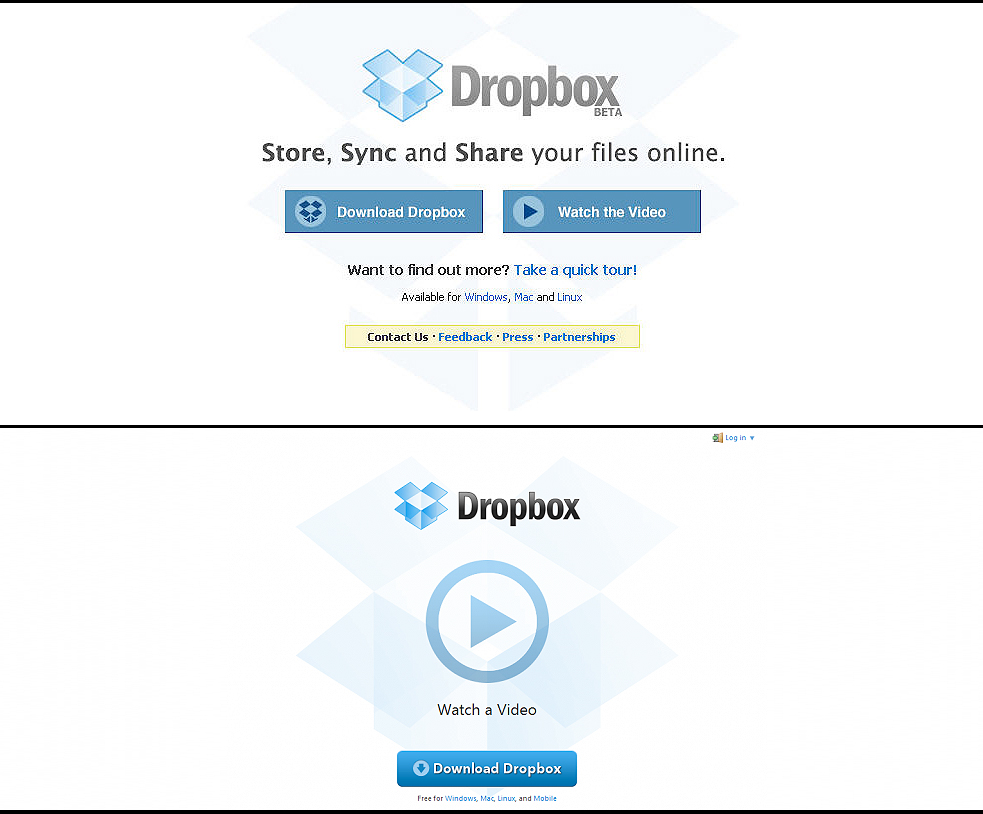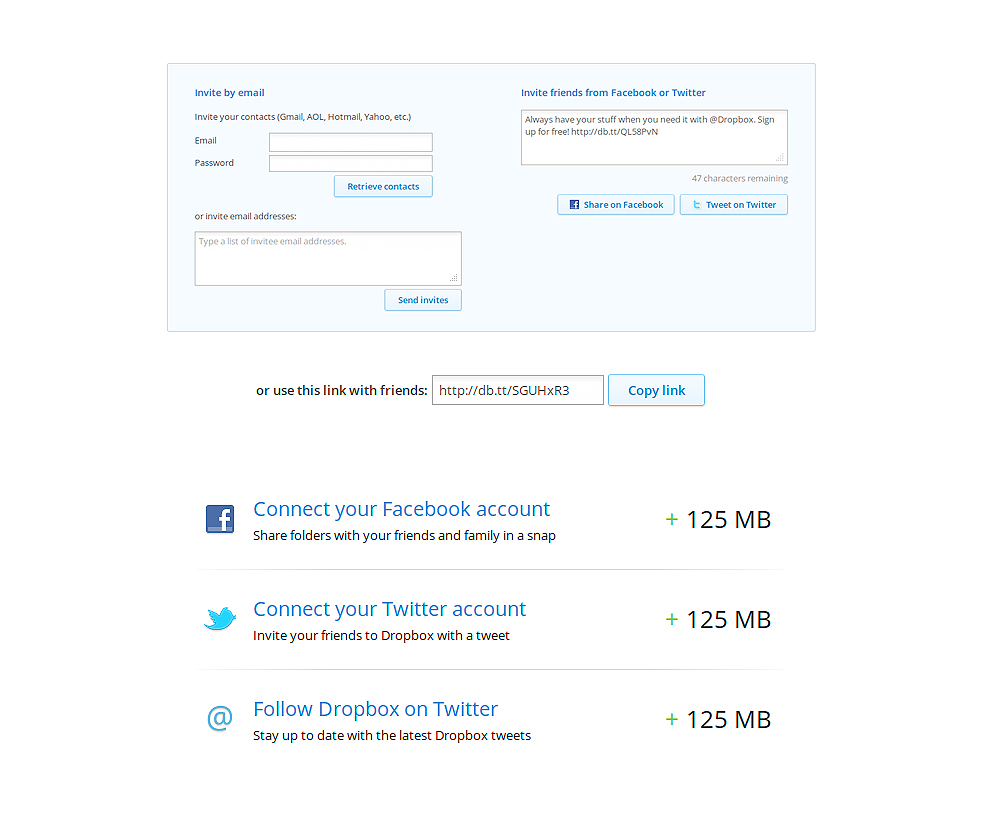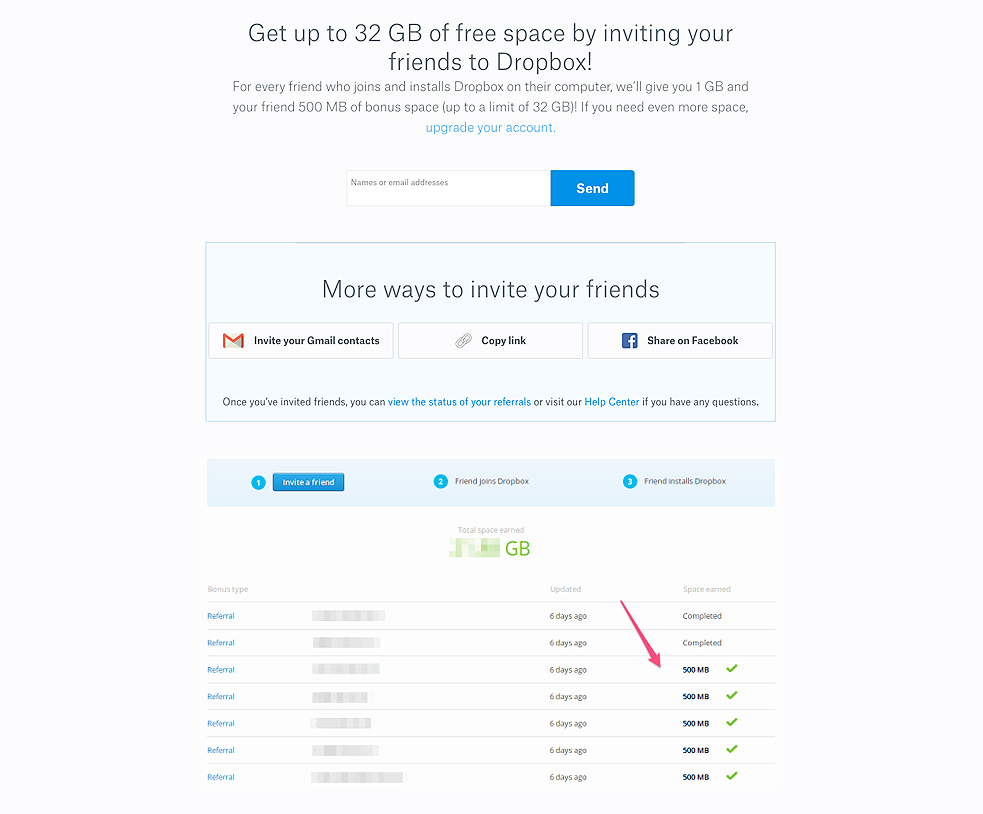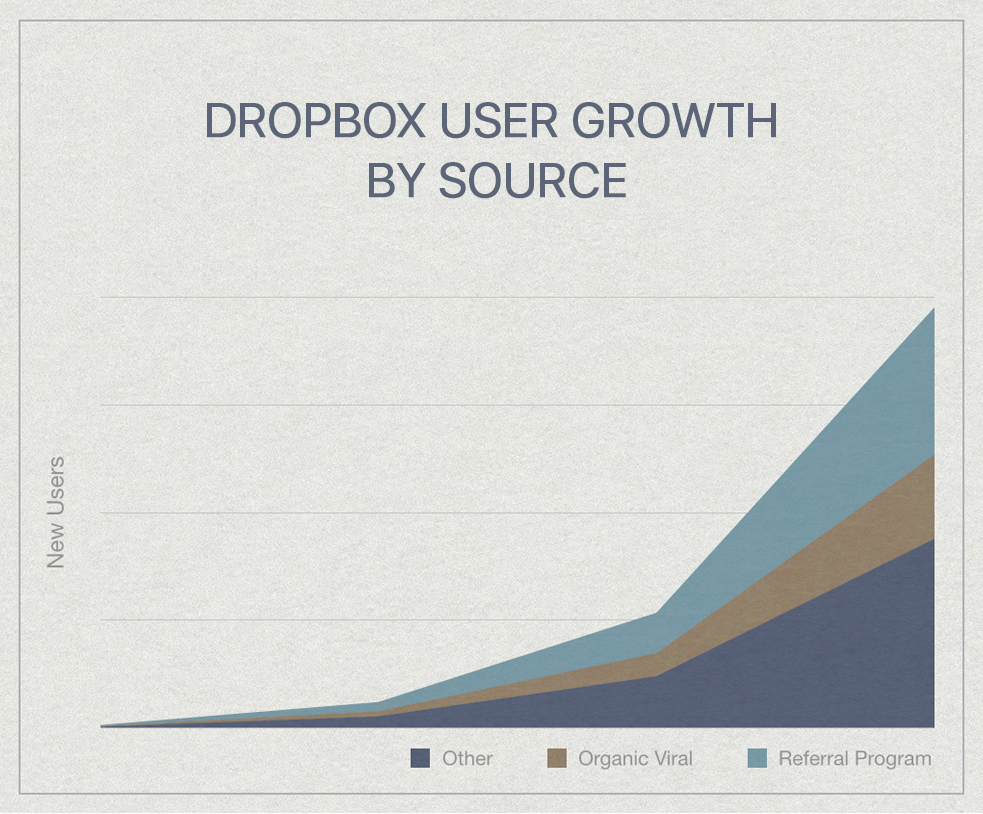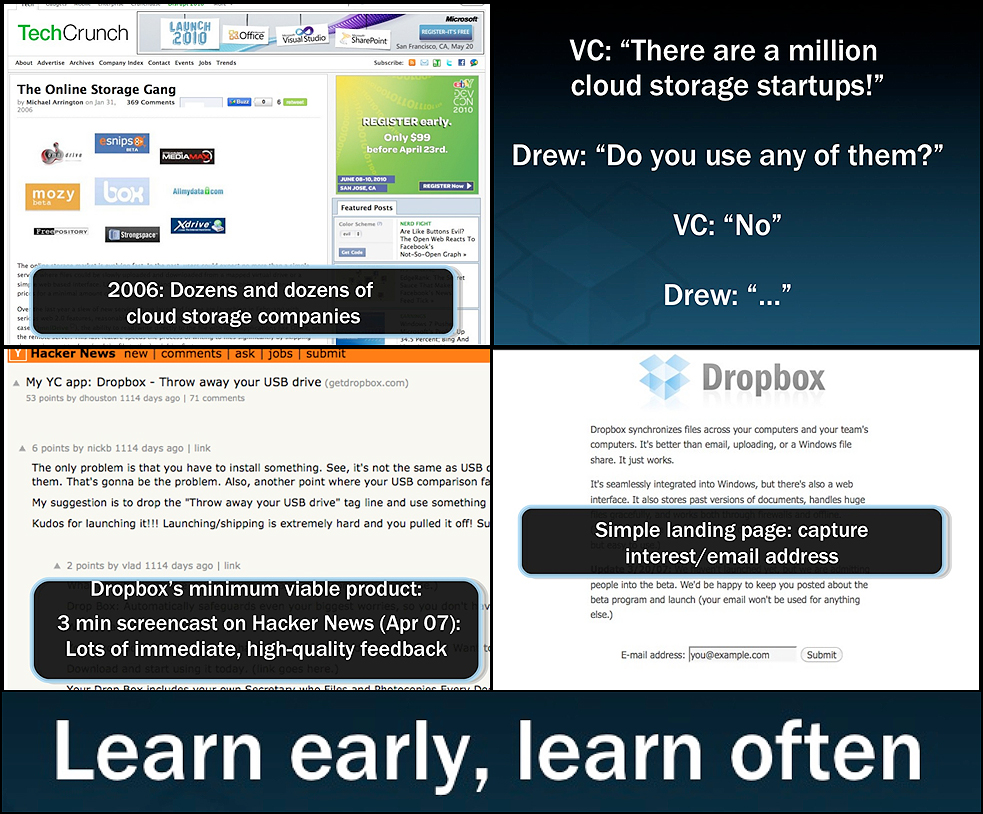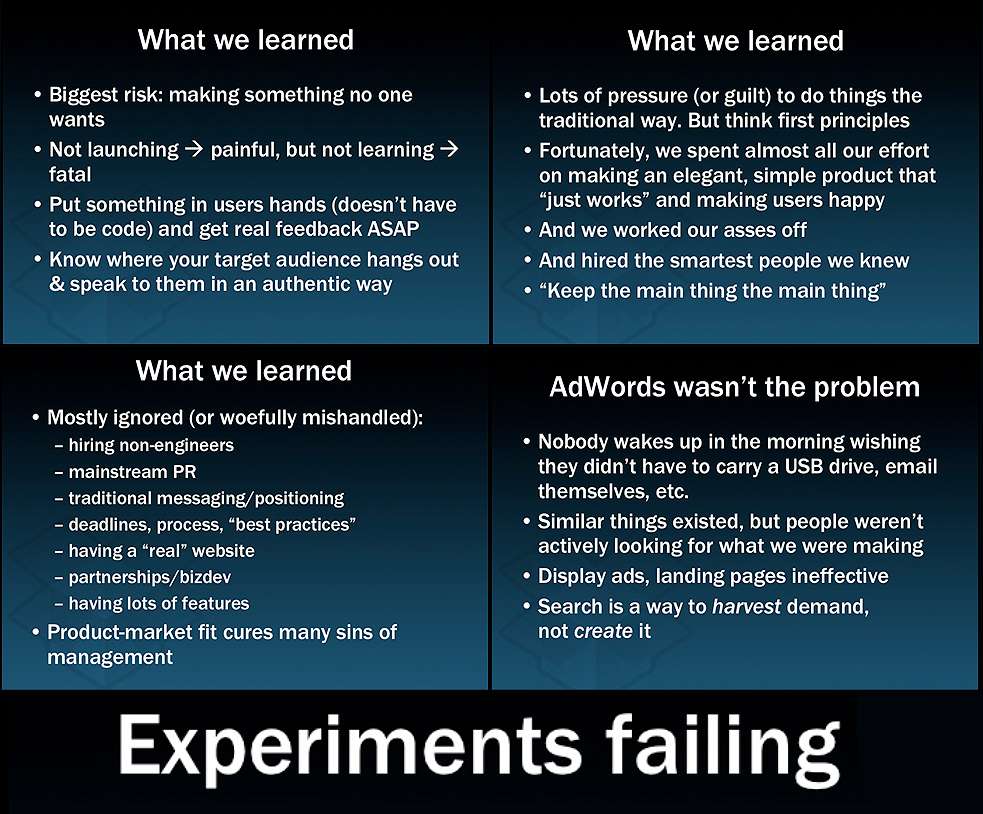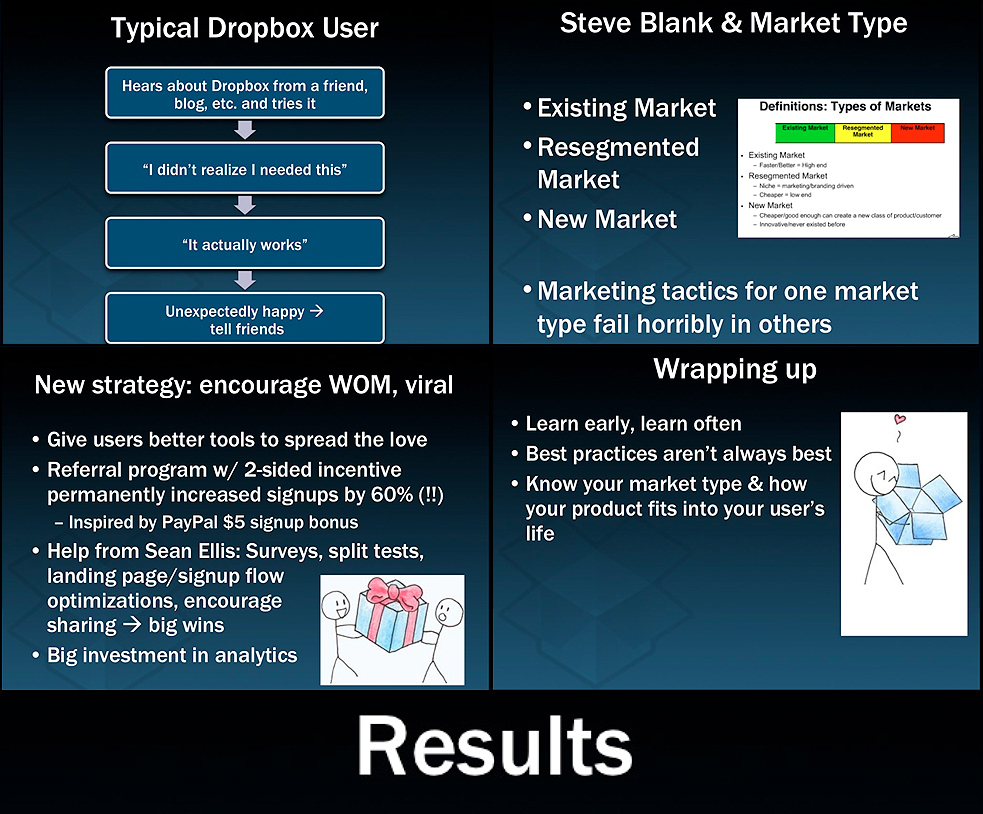
How Dropbox
Got Their First Users
Dropbox is a file hosting service offering personal cloud storage and file sharing. Founded in 2007 (San Francisco, CA).
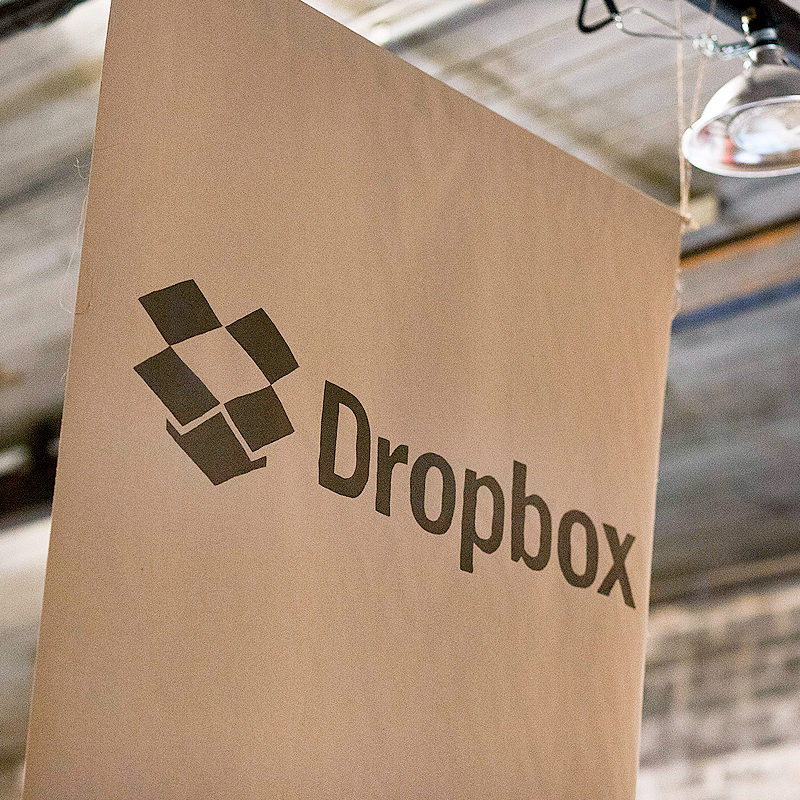
In 2018, Dropbox became Y Combinator's first startup to ever file for an IPO. By that time it had 500 million registered users, with 11 million paying for the service (2.2%). The company brought in $1.1 billion in revenue, but things did not always go smoothly. Dropbox’s founder, Drew Houston, struggled with his initial entrepreneurial venture and faced many challenges getting the startup off the ground.
In 2005, two years before launching Dropbox, Houston applied to get his first startup (SAT prep company) into the first batch of Y Combinator (YC) companies. His application was rejected.
Two years later, in 2007, Houston applied to YC again, this time with the idea for Dropbox, a service "creating a transparent file management system (Mac/Win) that aims to: sync your desktop files on the web, backup files, provide access anywhere, and make files easy to share."
When Drew Houston came up with the idea back in 2007, there was already a plethora of cloud storage companies. Dropbox had severe competition, most of which have since shut down or have had minimal success. Dropbox, however, currently has 500 million users and more than a billion dollars in annual revenue. What is its superpower? Marketing!
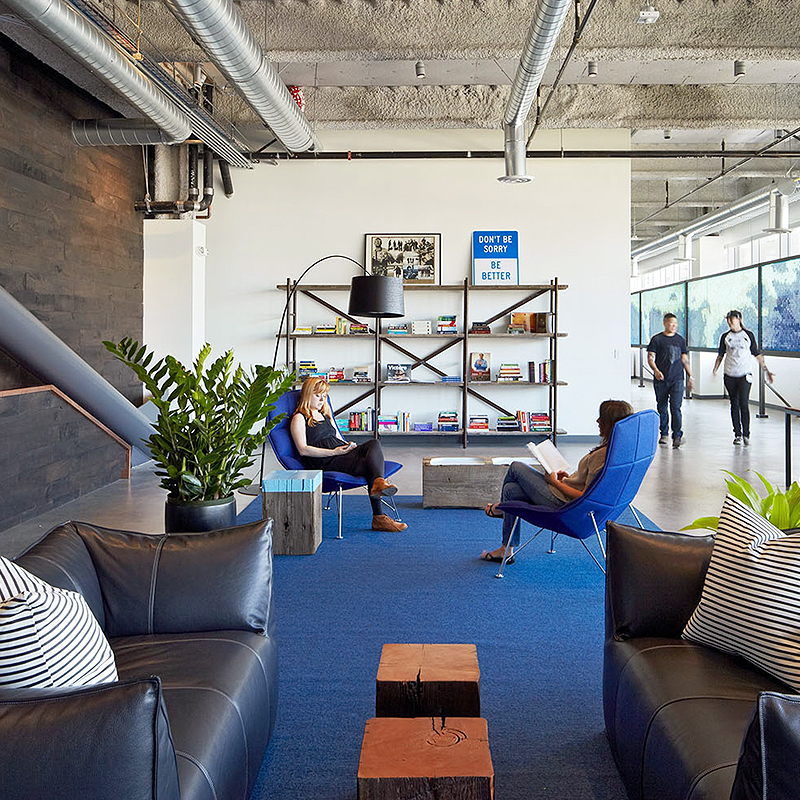

The following smart marketing tactics and growth hacks helped boost Dropbox to get their initial traction and first users: clear value proposition targeted to a relevant target audience, positioning focused on users over product, win-win incentive referral program, and embedded virality.
Drew’s first growth hack came into action along with the application he sent. He approached YC and early adopters with a clear pitch of value proposition at the place where that target audience convenes. He created a simple video, demoing the product, and published it on April 2007 on Hacker News (a website, built by YC co-founder and run by YC) with the title "My YC app: Dropbox – Throw away your USB drive."
That video brought the first users to the emerging Dropbox and, most importantly, grabbed Graham’s attention. He told Houston he liked his idea, but to get into the accelerator, Houston would need a co-founder - a common requirement for any startup. With the Hacker News creative pitch, Houston managed to find "the one" (Arash Ferdowsi) in less than two weeks. Drew persuaded Ferdowsi to drop out his MIT’s MS-program in his last year and focus on the startup as a co-founder and chief technology officer (CTO). As a result, Dropbox got its seed funding from Y Combinator in June 2007 and joined the exclusive startup program.


The public didn't hear much from the company until the Spring of 2008 when Dropbox publicly launched its service and went into private beta. Several weeks before the launch they had around 5,000 users only signed up, though they needed at least 10,000 early users in the beta list to prove Value Hypothesis and Growth Hypothesis for their startup. To solve this challenge, Houston utilized the same approach: know where your target audience hangs out and give them a taste of your product.
That year, the file synchronization startup did all the things that startups were "supposed" to do, like buying ads on Google’s search results through AdWords and hiring a public relations firm. However, when the company tried to continue that growth through traditional methods, it failed. The cost of acquiring a single customer ranged from $233-388, which for a $99 a year product was off. Dropbox also tried out affiliate marketing and display ads, none of which worked out. The problem, particularly with search advertising, was that no one was searching for a document syncing product. That’s the danger with trying to solve a problem that may be real, but that people do not realize they have yet.


So they turned to strategies the channel already proved. The second video came during the private beta launch in 2008. It was quite similar to the first one for YC, only this time they posted on Digg and Reddit, and they planted dozens of Easter eggs aimed at the Digg and Reddit users. The title of that remarkable growth hacking video was "Google Drive killer coming from MIT startup." It worked once again. The video got 1,506 Reddit upvotes and 12,000 Diggs which catapulted it to the first page. The beta waiting list jumped from 5,000 to 75,000 overnight. With 75,000 users in the waiting list, this video solved the "getting started" problem Dropbox was experiencing.
By the end of 2008, they had over 200,000 registered users, and people started talking about Dropbox being one of the breakouts they might choose over competitors Box.net (now Box) and Mozy. However, most of Dropbox’s first users were early adopters and tech-savvy users. The time to convince the rest of the world to use their product (growth stage) had arrived.
The third video was different and more marketing-focused for much wider audience. In it, the video described the Dropbox solution in a straightforward and non-technical way, using a story about a guy who travels to Africa. That focus on what users can do with the product, not what the product does, did the job and became Dropbox’s second famous growth hack.


Clear value proposition worked once again when Ferdowsi insisted on keeping a super simple homepage that featured only the third video and a download button. The number of options on the website was so limited that it was unmistakably clear what Dropbox wanted people to do - sign up for the service. It was one of the most effective landing pages of the time.
Even more successful was the referral program (the third growth hack) that offered both current users and new ones free space on Dropbox when the former signed up the latter for the service. Dropbox’s referral program is possibly one of the most famous cases of referral marketing done right. It brought 2 million invitations sent out in a month.
The concept of the Dropbox referral program came from PayPal's refer-a-friend program. Paypal rewarded referrals with cash (as this is what their business was about), so Dropbox decided to use their product's primary value in their rewarding system. Since the product offered storage space in the cloud, they decided to reward people with more free space not only for referring their friends but also for accepting an invitation.
Moreover, the referral program became a part of the onboarding process. Humans like and favour simplicity. Dropbox knew this and not only made the whole onboarding a six-step piece of cake, but they integrated their referral program in it as a final step.
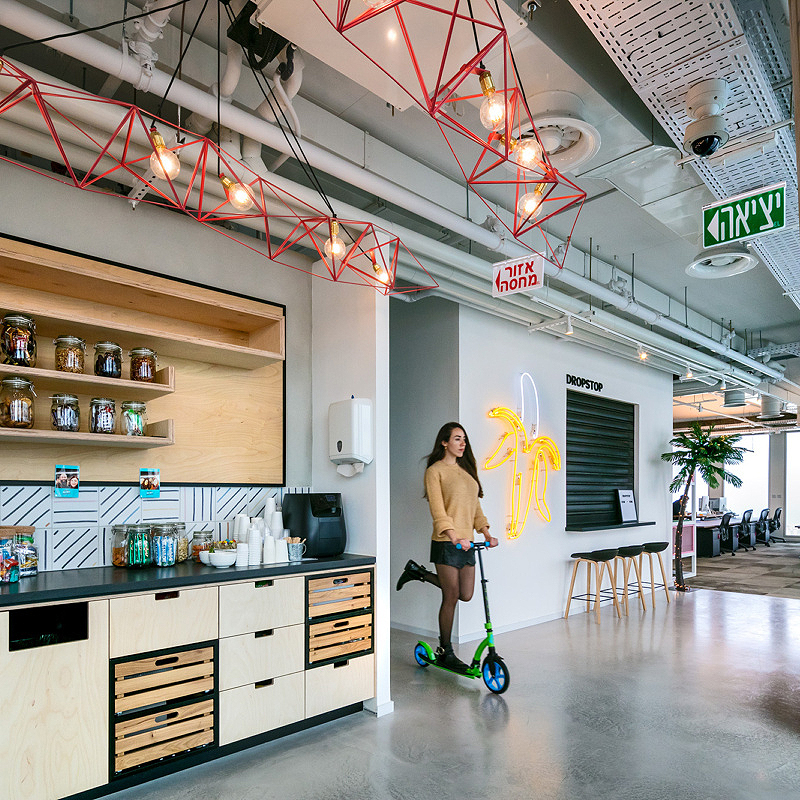

It’s worth mentioning that the second growth hack - focusing on users and their needs over the product and its features - helped as well. That is why instead of popular "Invite your friends," Dropbox framed the referral as "Get more space." Furthermore, Dropbox included a panel that was accessible anytime by users, so they can see how the invites performed.
Finally, the fourth pivotal growth hack came: embedded virality. Dropbox has been engineered to be a viral product. That is, you share a file with someone who is not a Dropbox user (even without trying to refer that person), they are invited to open a free Dropbox account (in the early days it was not mandatory to open an account).
Now every Dropbox user had an incentive to create other users, not just because they would get more space, but because it made things easier to collaborate on. Rather than share a file every single time, the filed can live in a Dropbox folder where every invited person can read, add or edit the project. Working on documents collaboratively becomes much simpler when you have shared folders.
That set Dropbox apart from the scores of cloud storage companies in that point in time. They were doing the exact opposite and were deliberately making it difficult for people to share documents.

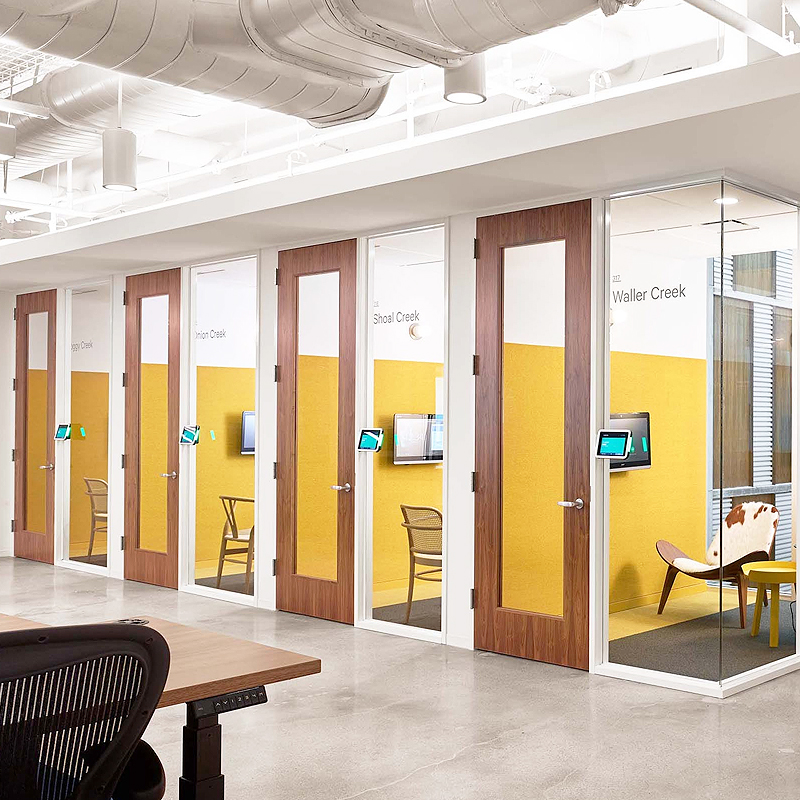
Services like Megaupload, Rapidshare, Hotfile and other file hosting sites would slow down download speeds and fill the space with spammy ads. For those services, you must get a premium account to experience average speeds.
All those marketing tactics and smart growth hacks made Dropbox one of the fastest growing startups in the history. The company hit 1 million members in the Spring of 2009 and 4 million registered users by the and of the year. They soared to a 25 million users cap in early 2010, 50 million in 2011, 100 million in 2012, 200 million in 2013, and so on.
Book a consultation
Hire me as your unfair advantage to leverage your startup's growth and traction!
HIRE ME ($300-500/h)